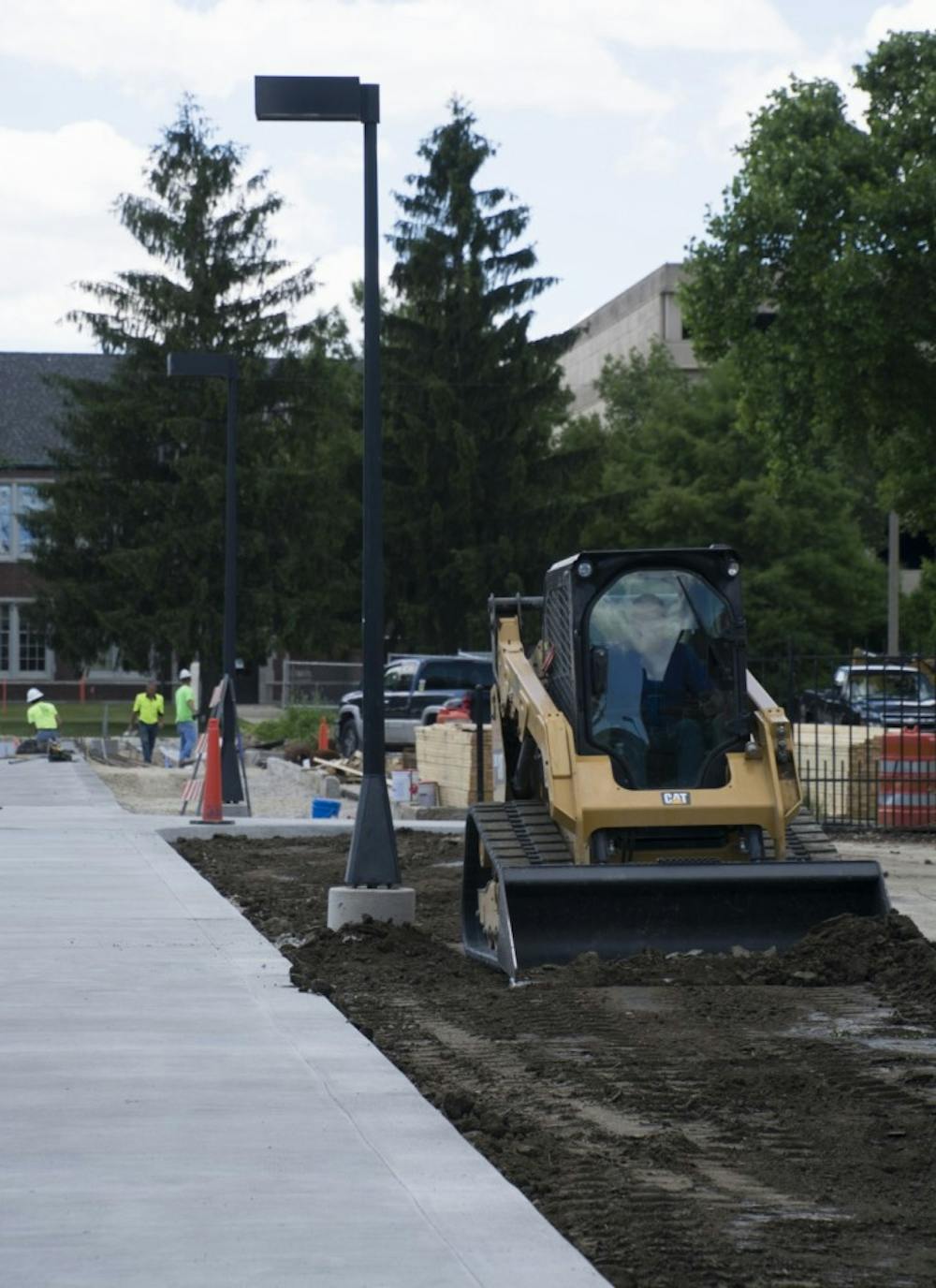Ball State did a lot of work on campus this summer to improve its energy efficiency, and the university's work on its current project is nearing completion.
Jim Lowe, associate vice president for Facilities Planning and Management, said most of the work completed over the summer included installing distribution piping, which distributes hot water and chilled water to buildings on campus — work that will soon bring benefits to the university's sustainability.
“We had two major focuses this summer. One was on University Avenue right across from Burris [Laboratory School] and Lucina [Hall]. The other focus was over by the east side of DeHority [Complex],” Lowe said. “It allows us to now connect buildings as we move into the winter, to the hot water side, and benefit yet more from the geothermal systems.”
Lowe said Ball State acquired $82.9 million to cover the cost of the project, which is worth the reductions in cost to come in the future. The funding was provided by both the state of Indiana and the U.S. Department of Energy,
“[This project] is reducing our carbon footprint by nearly 50 percent … [as well as] a 40 percent reduction in our energy use,” Lowe said. "We’ve estimated that this is a 50-year infrastructure project. We’ll just continue to repair it and upgrade it as needed — this system will serve the campus for decades to come."
The project, Lowe said, is also estimated to reduce steam production, which will save about 45 million gallons of water every year.
The changes have proven impressive, and Ball State’s reputation as a “green” university has also gone up as a result of the project, Lowe said. Representatives from 33 different colleges and universities across the nation have visited Ball State to learn about the sustainability system in order to adapt it to their own campuses. Engineering firms from Germany, Japan and Korea have also visited the university to view the system and learn about its benefits.
Ball State is also one of 21 colleges across the country this year to make the Princeton Review’s 2017 Green Honor Roll. Colleges achieve this by receiving a score of 99 (the highest possible score) in the Green Rating tallies, according to the Princeton Review's guidelines.
“It’s drawn a lot of attention for the university. It’s given us a lot of visibility in terms of our green visibility," Lowe said. "People realized just how well we’re doing with sustainability, and it’s not just this project … It’s the fact that we’ve had, for a number of years, a team of people who have been involved in sustainability on campus.”
As for the duration of the project as a whole, Lowe said the construction is now within 10 months of completion.





